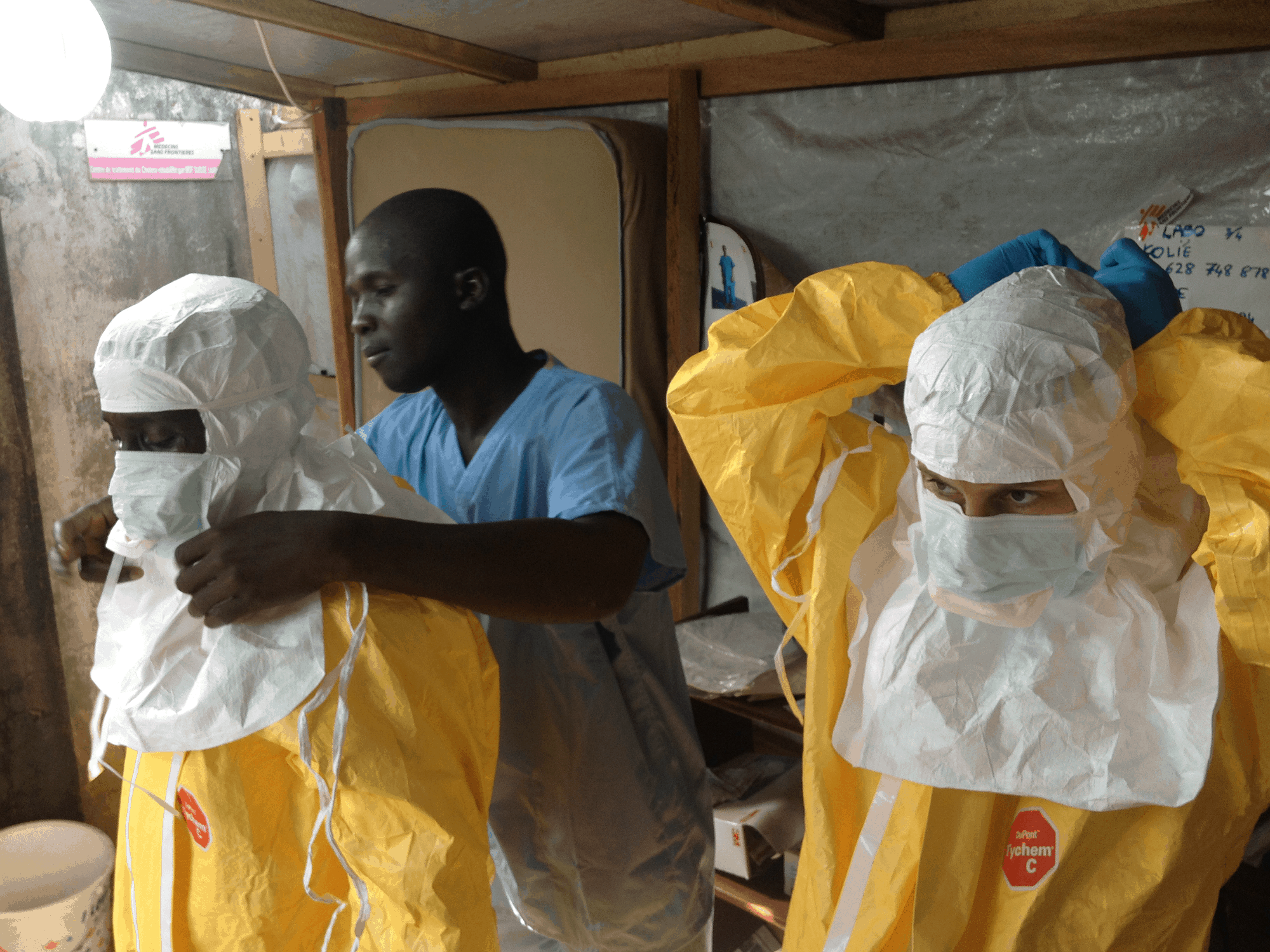
In 2008, the Wildlife Conservation Society (WCS) listed 12 pathogens (disease-causing agents) that would likely spread into new areas of the world as a result of climate change.
Dr. Steven E. Sanderson, who retired in 2012 as President and CEO of the WCS, stated:
"The term 'climate change' conjures images of melting ice caps and rising sea levels that threaten coastal cities and nations, but just as important is how increasing temperatures and fluctuating precipitation levels will change the distribution of dangerous pathogens."
The prescience of that 2008 report is proving to be correct.
Last year, in a University of Georgia report, leading disease ecologists from around the world cited clear examples where the physiology of both hosts and parasites can be altered by climate change.
Sam Scheiner, NSF program director for the joint NSF-National Institutes of Health Ecology and Evolution of Infectious Diseases Program, foresaw the need for collaboration stating:
"Earth's changing climate and the global spread of infectious diseases are threatening human health, agriculture and wildlife. Solving these problems requires a comprehensive approach that unites scientists from biology, the geosciences and the social sciences."
The Deadly Dozen
Based on the article The deadly dozen: Climate change and disease and book Global Climate Change and Extreme Weather Events: Understanding the Contributions to Infectious Disease Emergence, here are the diseases which were predicted to become more prevalent with climate change:
- Avian influenza - a virus shed by infected birds through secretions and feces, H5N1 is a deadly strain which affects birds and humans. The fear is that this strain may morph into one which can spread from human to human.
- Babesiosis - a tick-borne disease which in severe cases makes animals or humans more susceptible to other infectious diseases.
 unicefguinea on flickr / Licensed under Creative Commons Attribution 2.0 GenericCholera - a water-borne diarrheal disease which increases when water temperature rises.
unicefguinea on flickr / Licensed under Creative Commons Attribution 2.0 GenericCholera - a water-borne diarrheal disease which increases when water temperature rises.- Ebola - evidence has shown that outbreaks are related to unusual variations in rainfall/dry season patterns. Right now we are in the midst of the largest outbreak of Ebola in west Africa to date.
- Intestinal and external parasites - more humans and animals are expected to be infected by parasites that are transmitted from wildlife to humans as temperatures (and precipitation levels) change.
- Lyme disease - tick distributions have shifted (moved north into Canada for example) as a result of climate change.
- Plague - also known as Yersinia pestis, it is spread by rodents and their fleas.
- Red tides - created by toxins from harmful algal blooms off global coasts which are deadly to humans and wildlife.
- Rift Valley Fever - mosquitoes transmit this to livestock such as cattle, goats, sheep, and camels. People contract it when they butcher/prepare these types of meat.
- Sleeping sickness (trypanosomiasis) - caused by the protozoan Trypanosoma brucei, it is transmitted by the tsetse fly.
- Tuberculosis - drought is expected to cause shortages of water where livestock and humans may contract the disease; unpasteurized milk is another way humans contract it (particularly in southern Africa).
- Yellow fever - carried by mosquitoes which means as precipitation and temperatures rise, so will this disease. A type known as jungle yellow fever can be spread from primates to humans and vice versa through mosquitoes.
April 2014 at a busy market in Conakry, Guinea
UNICEF educates people how to protect themselves from Ebola
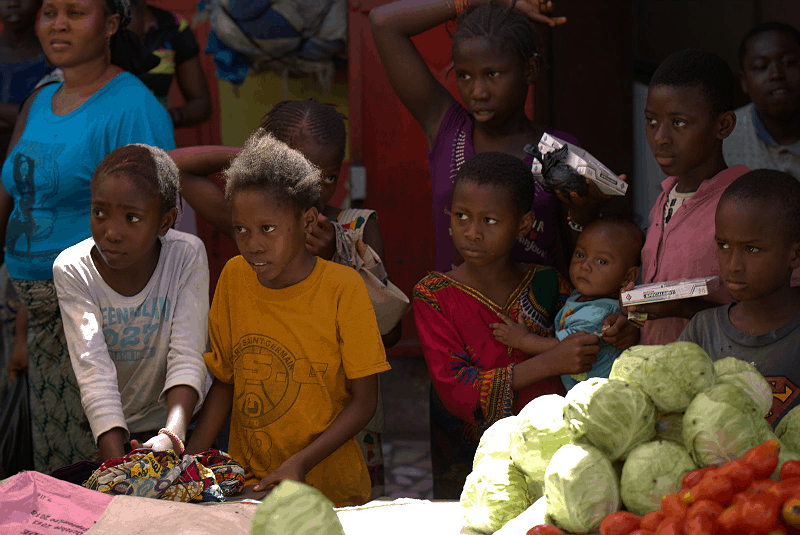
July 2014
When I read the WHO | Ebola virus disease, West Africa - Update, the following sentence made me uneasy:
"WHO does not recommend any travel or trade restrictions be applied to Guinea, Liberia, or Sierra Leone based on the current information available for this event."
Monkey Meat and the Ebola Outbreak in Liberia
Warning: May be disturbing to some viewers
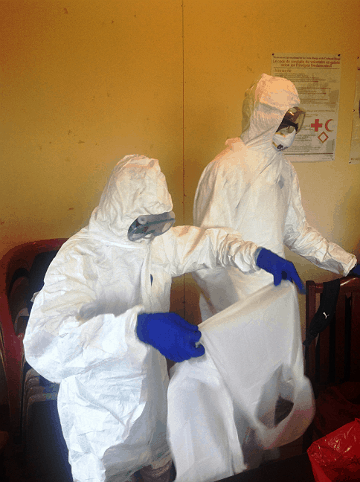 EU Humanitarian Aid and Civil Protection on flickr / Licensed under Creative Commons Attribution-NoDerivs 2.0 GenericBy the end of June 2014, almost 760 Ebola cases were confirmed in Guinea, Liberia and Sierra, according to the WHO - and nearly 470 people have died.
EU Humanitarian Aid and Civil Protection on flickr / Licensed under Creative Commons Attribution-NoDerivs 2.0 GenericBy the end of June 2014, almost 760 Ebola cases were confirmed in Guinea, Liberia and Sierra, according to the WHO - and nearly 470 people have died.
In a Deutsche Welle (DW) report West African health ministers meet on Ebola crisis, Armand Sprecher of Doctors Without Borders explains:
"The virus is in constant circulation in bats. The assumption is that movements of the bat population transport the virus and then it moves into non-human primates like chimps or gorillas and then into humans, usually through consumption of bushmeat. The bats roost in trees that are likely also used by non-human primates for the purposes of fruit collection and the like."
Dr. Luis Gomes Sambo, Africa regional director of the WHO, added that Ebola's spread has been facilitated by people who are crossing the borders; cultural beliefs and customs are also playing a role.
Sadly, there appears to be denial, misinformation, and mistrust circulating in many of the affected communities. In another DW article Ebola epidemic said to be 'out of control', Stephan Becker, department head of virology at Marburg University in Germany, stated:
"We see that the population do not trust us. The people in the villages don't believe in a virus infection. They think it is a curse - and for that Western medicine is useless in their eyes."
Apparently, many locals fear they would die if they went to quarantine facilities. What is making matters worse is that people were (are) hiding Ebola victims. Liberian President Ellen Johnson Sirleaf made it clear that Liberians caught hiding suspected Ebola patients would be prosecuted.
2014 Ebola Hemorrhagic Fever Outbreak
Guinea, Liberia, & Sierra Leone (CDC updated: July 3rd, 2014)
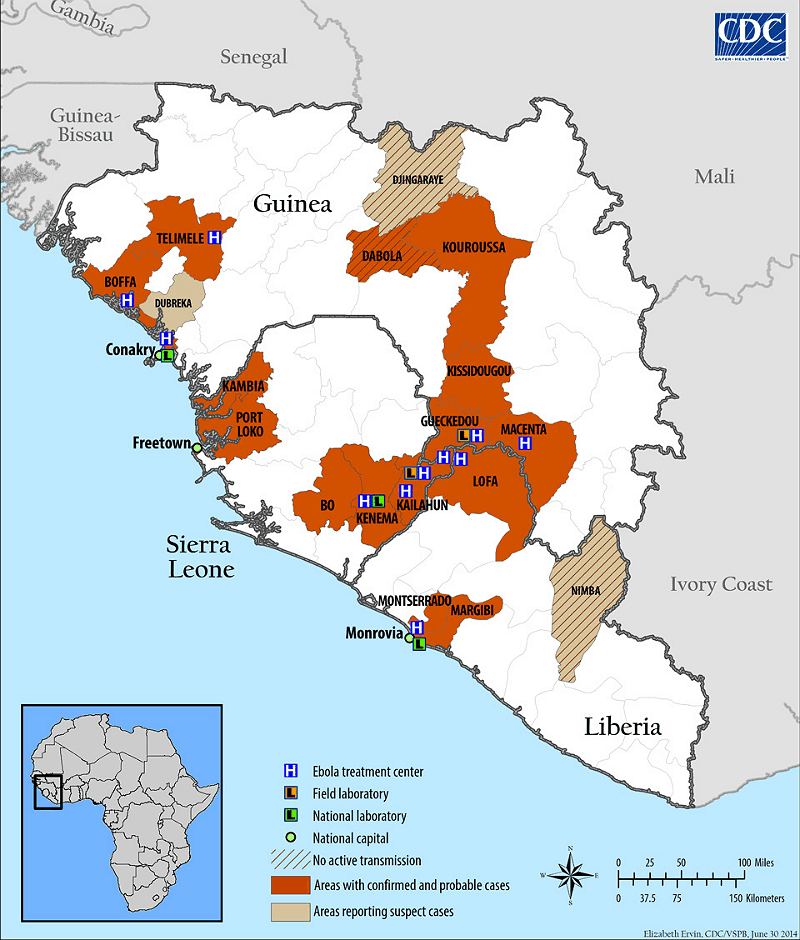
Not Only are Bats and Monkeys a Problem
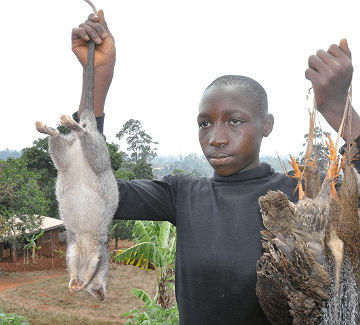 Sarahtz on flickr / Licensed under Creative Commons Attribution 2.0 GenericAs you could tell from the video, banning the sale and consumption of bushmeat (meat from wild animals) hasn't prevented people from finding it. I also wonder how effective the fear of prosecution for hiding sick people will be.
Sarahtz on flickr / Licensed under Creative Commons Attribution 2.0 GenericAs you could tell from the video, banning the sale and consumption of bushmeat (meat from wild animals) hasn't prevented people from finding it. I also wonder how effective the fear of prosecution for hiding sick people will be.
And it's not just monkey meat that is the problem - antelope, deer, rodents, ape, rat, and bat (and pigs) can all transmit Ebola. When people travel to affected areas to purchase bushmeat, they carry the pathogen back to areas that were previously unaffected.
3 Lesser Known Facts about Ebola:
1) It can still be transmitted after death (during traditional African burials, mourners touch the deceased). A National Geographic news report, states the "Ebola virus can live on the skin of a victim even after death."
2) In 2012, Canadian scientists discovered that Ebola could be transmitted by air between species. The proof is laid out in a scientific report. In the Philippines, pig farmers were found to carry antibodies for Ebola Reston (a less deadly strain of Ebola than what is currently circulating in Africa).
In 2012, a BBC news report by Matt McGrath, Dr. Larry Zeitlin, president of Mapp Biopharmaceuticals, confirmed that this study raises questions about other animal sources of Ebola. He added, "The thought of airborne transmission is pretty frightening."
The Canadian scientists believed that "limited airborne transmission might be contributing to the spread of the disease in some parts of Africa."
3) When I reviewed the WHO | Ebola virus disease fact sheet (which was updated April 2014) the following sentence came as a shocker:
Ebola virus was isolated from semen 61 days after onset of illness in a man who was infected in a laboratory.
Doesn't this make it a sexually transmitted disease? I'm not hearing much about this form of transmission.
In Summary
What we know about this deadly outbreak of Ebola in Africa may be the tip of the iceberg. I think that restricting the movement of people will become a necessary step and policing (somehow) the sale and consumption of bushmeat.
I'd imagine that in order to survive, some people in Africa need to sell bushmeat. We need to give people in these communities another option for economic survival.
One of the key challenges appears to be in gaining the trust of people in Africa. To isolate this deadly disease, unfortunately, we need to isolate (quarantine) people.
Finally, I agree with the final word from VICE News host Kaj Larsen (from the video):
"In a place where humans and monkeys are in such close proximity, a new virus could emerge that's even more lethal. Some human, somewhere (likely in Africa) is going to eat a monkey with a disease that's never been seen before - super Ebola, a new strain of AIDS. And according to Dr. Joseph Fair, that virus could kill 1/3 of the planet's population. It's not the disease we know, it's the one we don't [know]."
